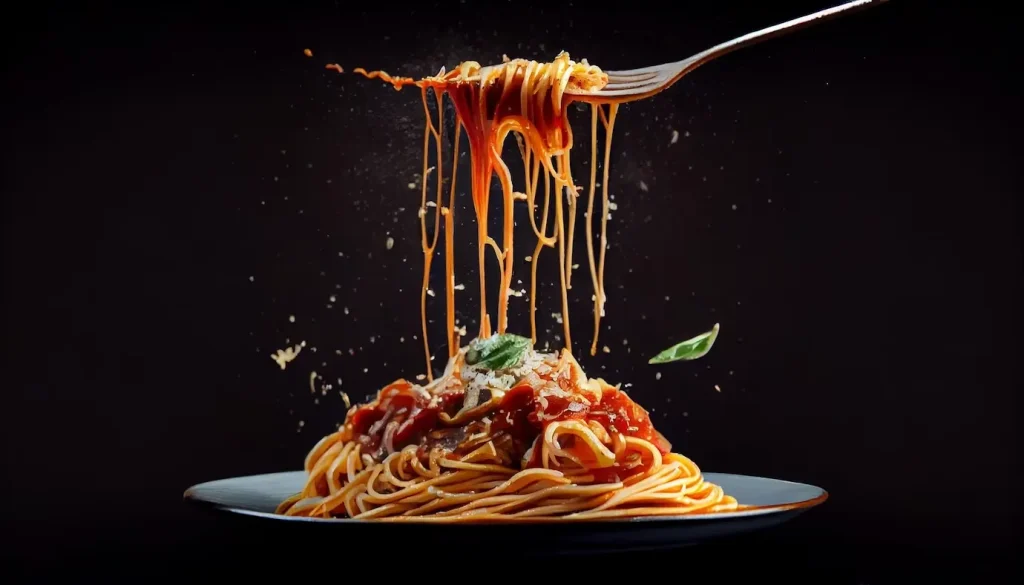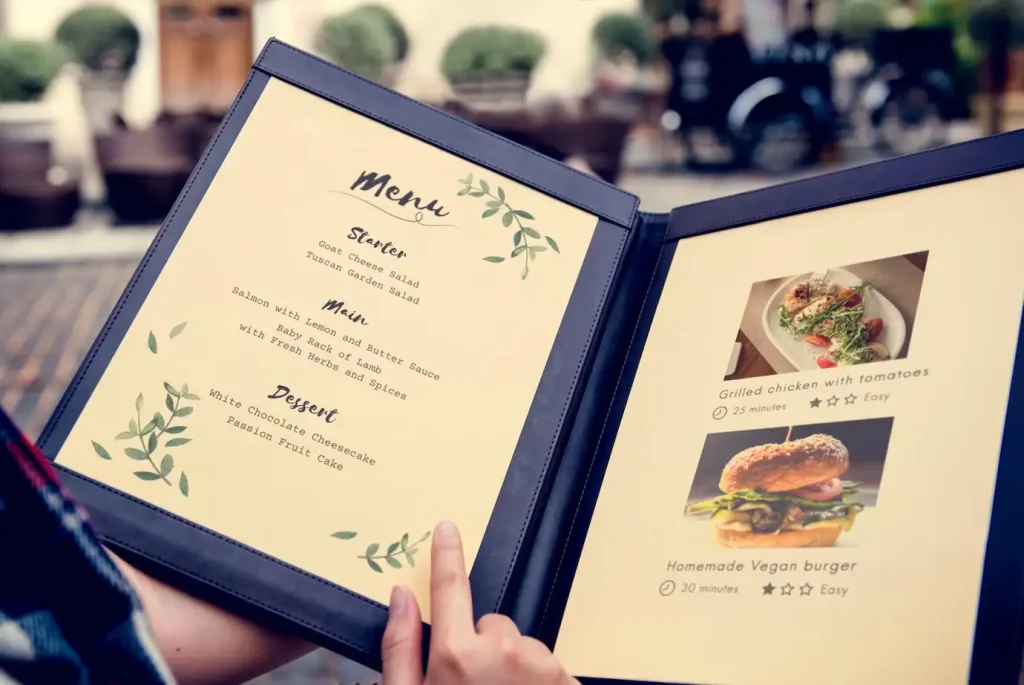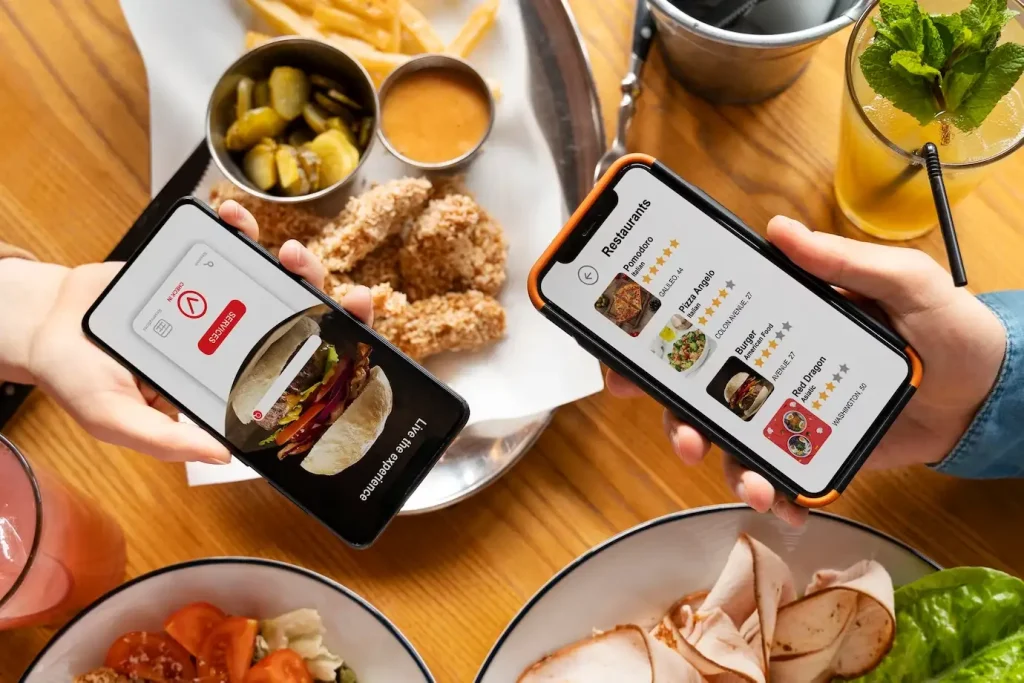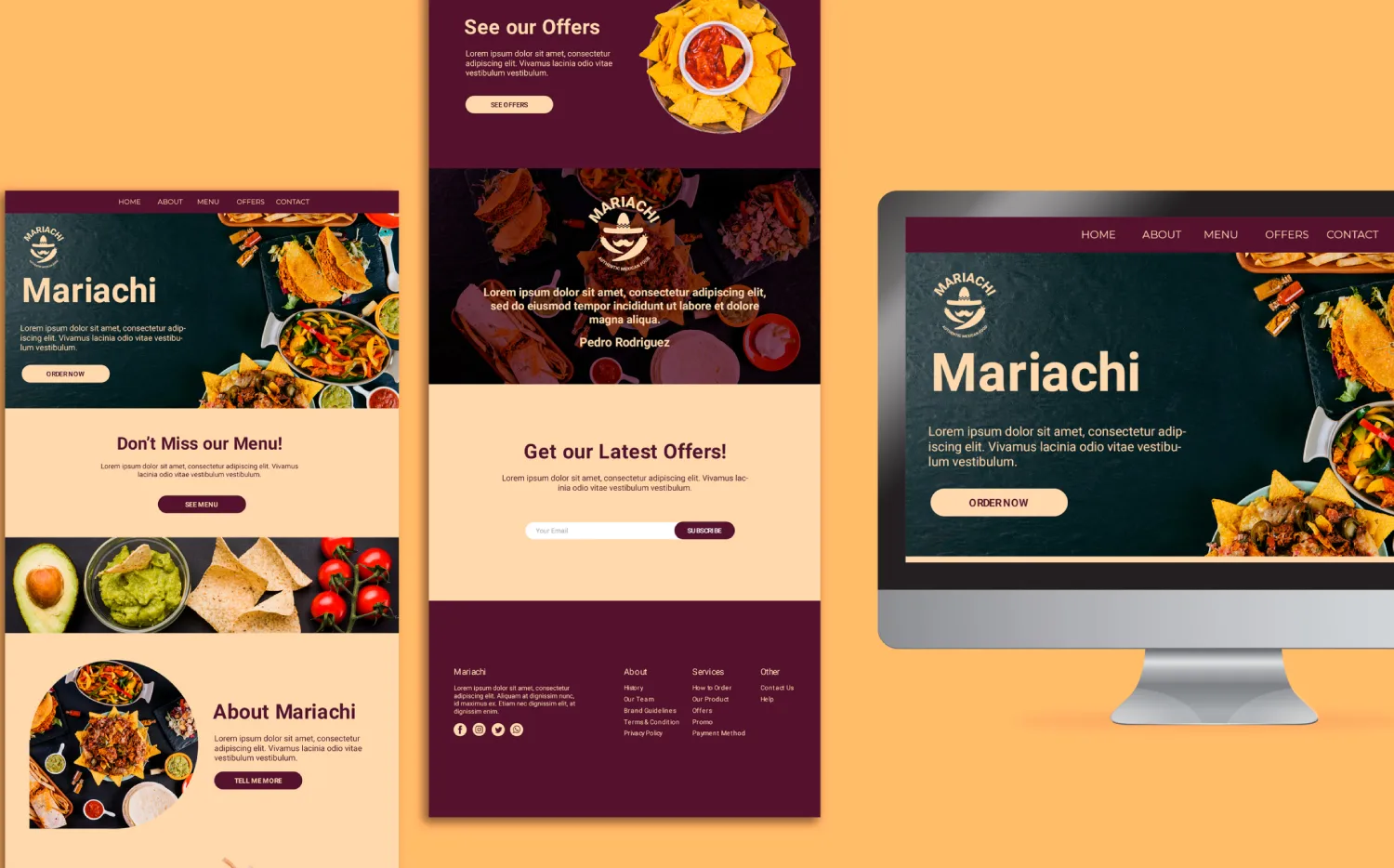In today’s digital age, having a strong online presence is essential for businesses of all types, including restaurants. Effective website development and design are the key to making your dishes shine online, enticing potential customers and providing a seamless user experience. In this blog, we’ll explore the importance of website development and design for restaurants and provide tips on how to create a digital experience that showcases your culinary creations. In this blog, we will discuss the features/functionality or content needed specifically for the Restaurant website
The Digital Dining Experience
Before diners set foot in your restaurant, they often visit your website first. Your website is a representation of your establishment, your menu, and your brand. It’s the first impression many customers will have of your restaurant. Therefore, it’s crucial to make this virtual experience just as appetizing as the real one through website development and design.
User-Friendly Navigation

In the fast-paced world of the internet, the attention span of users is limited. When it comes to restaurant websites, the first thing diners expect is a seamless and user-friendly experience. The foundation of any successful restaurant website is undoubtedly a user-friendly design. This means that when visitors land on your site, they should find it not only visually appealing but also effortlessly navigable.
Imagine your website as the front door to your restaurant. If the door is difficult to open, people may hesitate to enter. In the digital realm, a complex or confusing website design can have the same effect, pushing potential customers away before they even get a glimpse of your mouthwatering menu.
So, what does it mean to have user-friendly navigation on your restaurant’s website?
- Clear and Intuitive Menus: When users arrive at your website, they should be able to quickly identify where to find the information they need. This begins with clear and intuitive menus. These menus should be logically structured, offering easy access to essential pages like your menu, contact information, reservations, and about us.
- Speedy Load Times: Users expect web pages to load quickly. Slow load times can be a major turn-off. Ensure that your website is optimized for speed to keep visitors engaged.
- Mobile Responsiveness: In an age where mobile browsing is the norm, your restaurant’s website must be responsive on all devices. This means that whether a user is accessing your site on a desktop, tablet, or smartphone, they should have a smooth and enjoyable experience.
- Search Functionality: Implement a search feature that allows users to find specific dishes or information quickly. This is particularly important for restaurants with extensive menus.
- Call-to-Action Buttons: Your website should include clear and strategic calls to action, such as “Make a Reservation” or “Order Now.” These buttons guide users toward the actions you want them to take, whether it’s reserving a table or exploring your menu.
- Visual Appeal: While ease of use is crucial, the visual appeal of your website is also significant. The design should be in line with your restaurant’s branding and ambience. High-quality images of your dishes can be particularly enticing, making users eager to try your culinary creations.
- Regular Updates: Ensure that your website is up-to-date. This includes current menu offerings, opening hours, and contact information. Outdated information can be frustrating for users and potentially cost you customers.
High-Quality Imagery

In the world of digital marketing, few adages hold as much weight as “a picture is worth a thousand words.” When it comes to restaurant websites, this saying is more than just a cliché; it’s a guiding principle for creating an enticing and memorable online presence. High-quality imagery is the key to making your dishes come alive on your website, allowing potential customers to savour the visual feast even before they step through your restaurant’s doors.
Here’s why high-quality imagery is so crucial for your restaurant’s website:
- Tempting the Senses: When someone visits your restaurant’s website, you have the opportunity to tantalize their senses from the very beginning. High-resolution images of your delectable dishes can evoke a sensory experience, making visitors practically taste and smell your culinary creations through their screens.
- Making a Strong First Impression: In the digital age, your website often serves as the first impression potential customers have of your restaurant. Just as a well-plated dish can whet the appetite, stunning images can whet the curiosity of your online visitors, encouraging them to explore your menu and ultimately dine with you.
- Building Credibility: High-quality imagery conveys professionalism and attention to detail. It shows that you take pride in your culinary offerings, which can instill trust and confidence in your potential patrons. It’s a subtle yet powerful way to communicate your commitment to quality.
- Reflecting Your Brand: Your website is an extension of your restaurant’s brand. The images you showcase should align with your restaurant’s style and ambiance. Whether you’re a cozy bistro or an upscale fine dining establishment, your imagery should reflect your unique identity.
- So, how can you ensure your website is a feast for the eyes?
- Professional Photography: Invest in professional photography to capture your dishes in their best light. A skilled photographer can highlight the textures, colors, and presentation of your food, making it all the more appetizing.
- Mouthwatering Presentation: Pay attention to the way your dishes are presented. The art of plating is as crucial in a photograph as it is on a dining table. Ensure that each image showcases your dishes at their most mouthwatering.
- Regular Updates: Keep your imagery up-to-date. If you introduce new menu items or seasonal specials, be sure to have them professionally photographed and featured on your website promptly.
- Balance and Consistency: Maintain a balance between showcasing your signature dishes and a variety of menu offerings. Consistency in style and image quality across your website is key for creating a polished and professional look.
Responsive Design
In the age of digital dominance, mobile browsing has become the norm, and for restaurant websites, adapting to this shift is imperative. Responsive design is the key to ensuring that your potential customers can access your site seamlessly, regardless of the device they’re using, be it a desktop, tablet, or smartphone.
Here’s why responsive design is indispensable for your restaurant’s website:
- Ubiquitous Mobile Usage: Mobile devices have become an integral part of our lives. People use smartphones and tablets to access information, make reservations, and order food on the go. Your website must be ready to cater to this massive mobile audience.
- Enhanced User Experience: Responsive design guarantees that your website looks and functions flawlessly on all devices. It adjusts the layout, text, and images to fit the screen, ensuring a consistent and user-friendly experience for all visitors. A positive user experience can significantly impact their decision to dine at your restaurant.
- SEO Benefits: Having a responsive design can improve your website’s search engine ranking, making it more discoverable to potential customers in search results.
- Versatility and Cost-Effectiveness: Instead of creating a separate mobile website, responsive design adapts your existing site to various screen sizes. This approach is not only more versatile but also cost-effective, as it eliminates the need for maintaining and updating multiple versions of your website.
So, how can you ensure that your restaurant’s website boasts a responsive design?
- Fluid Layouts: Design your website using fluid grid systems, allowing elements to adapt and reconfigure themselves based on the screen size. This ensures that content is displayed optimally on screens of all dimensions.
- Media Queries: Implement media queries in your website’s CSS (Cascading Style Sheets) to adjust styles and layouts based on the device’s characteristics. This includes modifying fonts, image sizes, and menu layouts.
- Test Across Devices: Regularly test your website on various devices to ensure that it maintains its functionality and aesthetic appeal. Catching and resolving issues early can prevent potential customers from encountering frustrating problems when accessing your site.
- Content Prioritization: With limited screen space on mobile devices, prioritize the most critical content and actions for a seamless mobile experience. Ensure that key information, like your menu, contact details, and reservation options, is easily accessible.
Online Menu

Your restaurant’s menu is the beating heart of your culinary identity, and when it comes to your website, it plays a central role in enticing potential diners. A well-structured online menu can make all the difference in encouraging visitors to make a reservation or place an order. It should be clear, concise, and up-to-date, providing an immersive experience that leaves customers eager to savour your delectable dishes.
Here’s why your online menu is so crucial:
- First Point of Interest: For many visitors to your website, the menu is the very first thing they’ll want to explore. An appetizing menu with tempting descriptions and high-quality images can create immediate interest in your restaurant.
- Transparency and Convenience: Offering an online menu provides transparency about your offerings, allowing potential customers to browse your dishes, check prices, and see if your cuisine aligns with their tastes and dietary preferences.
- Timely Updates: To build trust and maintain your restaurant’s credibility, it’s essential to keep your menu up-to-date. This includes regularly adding new dishes, updating prices, and removing items that are no longer available. Online menus make this process efficient and easy.
- Mouthwatering Descriptions: The words you use to describe your dishes are just as important as the ingredients themselves. Use vivid and mouthwatering descriptions that evoke flavors and sensations, making visitors more eager to taste what you have to offer.
- Visual Appeal: High-resolution images alongside menu items can further tantalize your visitors’ senses. A picture of a beautifully presented dish can convey its deliciousness, making a strong visual impression.
So, how can you make your online menu shine?
- Clear Categories: Organize your menu into clear categories, such as appetizers, entrees, desserts, and beverages. This makes it simpler for visitors.
- Dietary Information: Include essential dietary information, such as vegetarian, vegan, gluten-free, or allergen-friendly options. This caters to a broader audience and shows your commitment to customer needs.
- Consistency: Maintain a consistent style throughout your menu. Use the same font, colors, and imagery to create a cohesive and visually appealing menu layout.
- Seasonal Specials: Feature seasonal or special dishes prominently to entice visitors with limited-time culinary delights.
- User-Friendly Navigation: Ensure that users can easily navigate through your menu, with quick access to detailed dish descriptions, prices, and high-quality images.
Online Reservations and Orders

In the modern restaurant industry, convenience is key. To thrive in the digital age, your restaurant should make it easy for customers to book a table or place an order online. Offering a user-friendly reservation system and an efficient online ordering platform can streamline the customer experience, enhance satisfaction, and significantly boost your restaurant’s revenue.
Here’s why focusing on online reservations and orders is a recipe for success:
- Convenience: The ability to make reservations or place orders online offers unparalleled convenience to your customers. It saves them time, eliminates the need for phone calls, and allows them to plan their dining experience with ease.
- Accessibility 24/7: An online reservation and ordering system is available around the clock, catering to customers’ diverse schedules. Whether someone wants to make a reservation in the middle of the night or place a lunch order during a busy workday, your digital platforms are always open for business.
- Reduced Wait Times: Online reservations allow you to manage your restaurant’s seating more efficiently, reducing wait times for customers. It’s a win-win situation: patrons spend less time waiting, and you can seat more diners, increasing your restaurant’s revenue.
- Data Collection: Online platforms provide valuable data on customer preferences, peak reservation times, and popular menu items. This information can help you tailor your offerings, marketing, and service to meet customer demands effectively.
- Upselling Opportunities: Online ordering platforms can be designed to suggest additional items or upgrades, helping to boost check averages and increase overall revenue.
So, how can you make online reservations and orders work for your restaurant?
- User-Friendly Platforms: Invest in a user-friendly reservation system and online ordering platform that’s easy to navigate. Ensure that customers can quickly find what they’re looking for and complete their bookings or orders with minimal effort.
- Mobile Optimization: Given the prevalence of mobile devices, it’s crucial to ensure that your reservation and ordering systems are fully optimized for smartphones and tablets. Mobile responsiveness is key to accommodating customers on the go.
- Clear Call-to-Action Buttons: Implement clear and strategic call-to-action buttons throughout your website, prompting visitors to make reservations or place orders. Make these buttons prominent and easy to locate.
- Integration: Ensure that your reservation and ordering platforms are seamlessly integrated with your website. This reduces the risk of technical glitches and makes the process smoother for customers.
- Online Payment Options: If you offer online orders, provide secure and convenient online payment options. The ability to pay digitally can enhance the customer experience and encourage repeat business.
SEO and Online Visibility
Designing a captivating website is just the beginning. To truly make your dishes shine, you need to make sure your website is discoverable. Search engine optimization (SEO) plays a crucial role in this.
- Local SEO: Optimize your website for local search by including relevant keywords such as “best Italian restaurant in [Your City].” Make sure your location, contact information, and opening hours are prominently displayed.
- Regular Blogging: Writing blogs about food-related topics, such as the art of pasta-making or the history of your signature dish, can attract both search engine traffic and food enthusiasts to your site. Engaging and relevant content can also boost your restaurant’s credibility.
Social Media Integration: This can help you engage with customers, showcase user-generated content, and build an online community around your restaurant
Engaging Content
Engaging content is essential for keeping visitors on your website and enticing them to try your dishes. Here are some ideas to consider:
- Chef’s Recommendations: Feature a section on your website where your chef recommends their favorite dishes. Personal touches like this can make your restaurant feel more inviting.
- Customer Reviews and Testimonials: Highlight favorable feedback and endorsements from content customers by showcasing their reviews and testimonials. Social proof can go a long way in building trust with potential diners.
- Culinary Blog: Consider starting a blog that delves into the world of food, including cooking tips, culinary trends, and stories from your kitchen. This adds value to your website and keeps visitors coming back for more.
Conclusion
In the digital age, your restaurant’s website, with effective development and design, is often the first point of contact with potential customers. A well-designed and optimized website can make your dishes shine online, increasing the likelihood that visitors will become loyal patrons. By focusing on user-friendly design, SEO, and engaging content, your restaurant’s website can become a valuable asset in your culinary journey. So, don’t just make your dishes shine in the kitchen; make them shine online too through website development and design!


